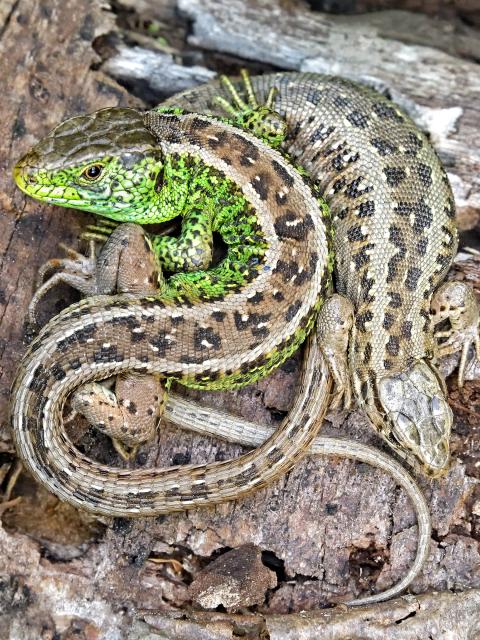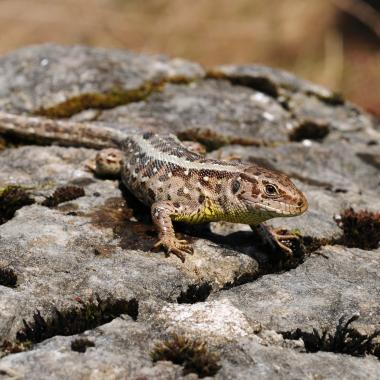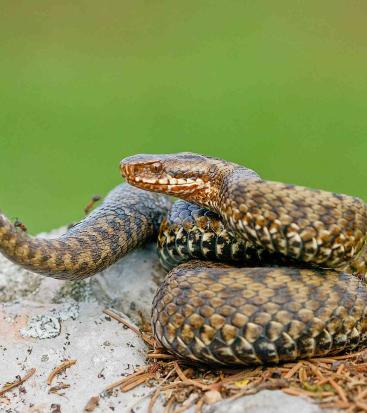Amphibians
With the exception of the Alpine salamander, all native amphibians require standing or slow-flowing water to mate, lay their eggs and raise their young, which they regularly visit during the breeding season. All 15 species recorded in Upper Austria are on the "Red List of endangered amphibians (amphibians)" and are strictly protected under the Upper Austrian Nature Conservation Act.
A total of seven amphibian species have been confirmed for the national park: Alpine newt, pond newt, yellow-bellied toad, common toad, grass frog, fire salamander and Alpine salamander. Three other species occur in the immediate vicinity of the national park: Jumping Frog, Pool Frog and Alpine Crested Newt. Of the seven confirmed species, three are listed in the Habitats Directive (FFH): Yellow-bellied Toad (Annex II), Alpine Salamander (Annex IV) and Grass Frog (Annex V). The three most numerous and widespread species in the national park are the grass frog, Alpine newt and common toad. Experts consider the good populations of the yellow-bellied toad to be of supra-regional and international importance.


Yellow-bellied toad
In the intensively used valleys of Central Europe, the yellow-bellied toad has become rare and has already disappeared in many places. This has also been the case in the Alpine foothills for some years now. However, it is still widespread in the area of Kalkalpen National Park and the intact population is becoming increasingly important for Upper Austria.

Alpine salamander
The Alpine salamander, also known as the "Bergmandl" or "Tattermandl", lives mainly in middle and higher mountain regions and grows to around 15 cm in size. It is the only native amphibian that does not need a body of water to reproduce, but gives birth to two to four fully developed young after a gestation period of several years.
Reptiles


Mountain lizard
At around 18 cm long, the mountain lizard is one of the smallest reptiles in Austria.

Adder
The coloration of the adder is very variable, which makes a clear description impossible. In the national park it can be found completely black and also reddish-brown with the familiar zigzag band on the back.







